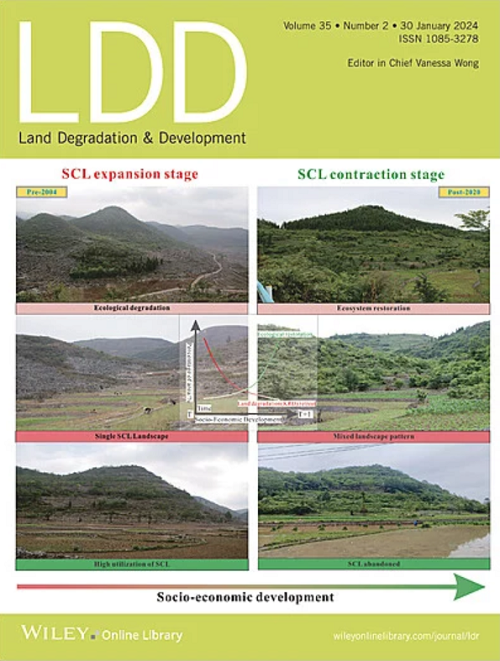Construction of Urban Agglomeration Ecological Network Based on Multi‐Scale and Multi‐Method: A Case Study of Yangtze River Delta Urban Agglomeration, China
IF 3.6
2区 农林科学
Q2 ENVIRONMENTAL SCIENCES
引用次数: 0
Abstract
Ecological networks (ENs) are vital for maintaining regional ecological security and preserving biodiversity. While various methods exist for constructing ENs, their effectiveness across different spatial scales, particularly in urban agglomerations, has not been thoroughly investigated. This study focuses on the Yangtze River Delta urban agglomeration (YRDUA), constructing ENs at three scales: urban agglomeration, metropolitan area, and city. Two methods were employed at each step, and the outcomes were evaluated and ranked using specific indicators. The results indicate: (1) For ecological source identification, the spatial distribution of ecological sources identified by different methods is consistent at the same scale, with the number of ecological sources identified at the three scales being around 600, 140, and 160, respectively. (2) For resistance surface construction, although there are differences between the two methods, the final resistance value shows relatively small changes. (3) Regarding the number of corridors, the quantities of the three scales are around 1470, 380, and 410, respectively. For specific indicators,基于多尺度、多方法的城市群生态网络构建——以长三角城市群为例
生态网络对于维护区域生态安全和保护生物多样性至关重要。虽然存在各种构建生态环境的方法,但它们在不同空间尺度上的有效性,特别是在城市群中,尚未得到充分的研究。本文以长三角城市群为研究对象,构建了城市群、都市圈和城市三个尺度的生态系统。每一步采用两种方法,并根据具体指标对结果进行评价和排序。结果表明:(1)在同一尺度下,不同方法识别的生态源空间分布基本一致,3种尺度下识别的生态源数量分别在600、140和160个左右。(2)对于电阻面施工,虽然两种方法存在差异,但最终电阻值变化相对较小。(3)在廊道数量上,三个尺度的廊道数量分别在1470条、380条和410条左右。具体指标上,三个量表的α值分别在0.71、0.85、0.81左右;β值分别约为2.42、2.68和2.61;γ值分别约为0.81、0.90和0.88;Cr值分别在0.88、0.80、0.68左右。在城市群尺度上,采用MSPA方法识别的生态源、采用SPCA方法构建的阻力面和采用Linkage Mapper提取的廊道的结果最优。在大都市和城市尺度上,采用MSPA方法确定的生态源、采用层次分析法构建的阻力面和采用graphhab提取的廊道得到了最优结果。这些发现为构建不同尺度的生态网络提供了方法论指导,并为多层次的景观规划提供了新的见解。
本文章由计算机程序翻译,如有差异,请以英文原文为准。
求助全文
约1分钟内获得全文
求助全文
来源期刊

Land Degradation & Development
农林科学-环境科学
CiteScore
7.70
自引率
8.50%
发文量
379
审稿时长
5.5 months
期刊介绍:
Land Degradation & Development is an international journal which seeks to promote rational study of the recognition, monitoring, control and rehabilitation of degradation in terrestrial environments. The journal focuses on:
- what land degradation is;
- what causes land degradation;
- the impacts of land degradation
- the scale of land degradation;
- the history, current status or future trends of land degradation;
- avoidance, mitigation and control of land degradation;
- remedial actions to rehabilitate or restore degraded land;
- sustainable land management.
 求助内容:
求助内容: 应助结果提醒方式:
应助结果提醒方式:


